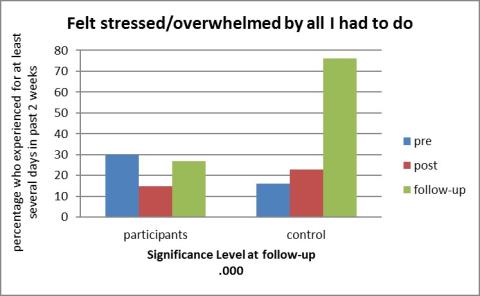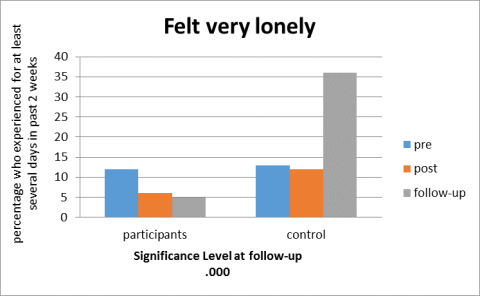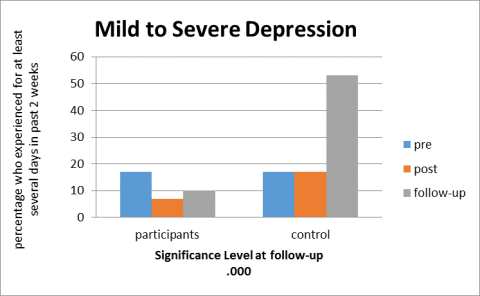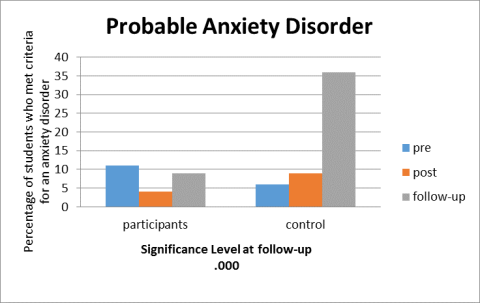Highlights of Results from Participation
In 2015, 110 students and 39 staff and faculty completed the 4 week Challenge. All participants completed a pre-assessment and post-assessment which were also given to a random control group of students over the same time period. Below is a selection of results from student participants compared to the student control group.
Stress/Overwhelm: At pre-assessment, 30% of Wellness Challenge participants felt stressed or overwhelmed by all they had to do, dropping to half that (15%) at the end of the Challenge, and climbing back up to 27% at the end of the semester. The random control group felt significantly less stressed than participants at the beginning of February (16%), but their stress/overwhelm steadily built over the course of the semester, rising to 23% at the beginning of March, and 76% at the end of the semester, triple that of participants!

Loneliness Students were asked about loneliness as an additional question. At pre-assessment, 12% of Wellness Challenge participants reported feeling very lonely, dropping to half that (6%) at the end of the Challenge, and hovering at 5% at the end of the semester. 13% of the random control group reported feeling very lonely, 12% at the beginning of March, jumping up 36% at the end of the semester, a rate seven times higher than participants.

Depression: The PHQ-9 was used to evaluate depression. At pre-assessment students who had signed up for the Wellness Challenge had a higher level of depression, at 10% compared to 6% of the random control group. After the Wellness Challenge, participants’ depression rate was halved, dropping to 5%, while the control group had increased to 10%. At the 7-week follow-up at the end of April (during the stressful period immediately before classes end and finals begin), participants’ rate of depression was one third that of the control group, at 17% and 53% respectively.

Anxiety: The GAD-7 was used to evaluate anxiety. At pre-assessment 11% of Wellness Challenge participants met the criteria for an anxiety disorder, dropping to 4% after completing Challenge, then increasing to 9% at the end of April. Only 6% of the random control group met the criteria for an anxiety disorder at the beginning of February, increasing to 9% at the end of March, and 36% at the end of the semester, an anxiety level 7 times higher than that of participants.
